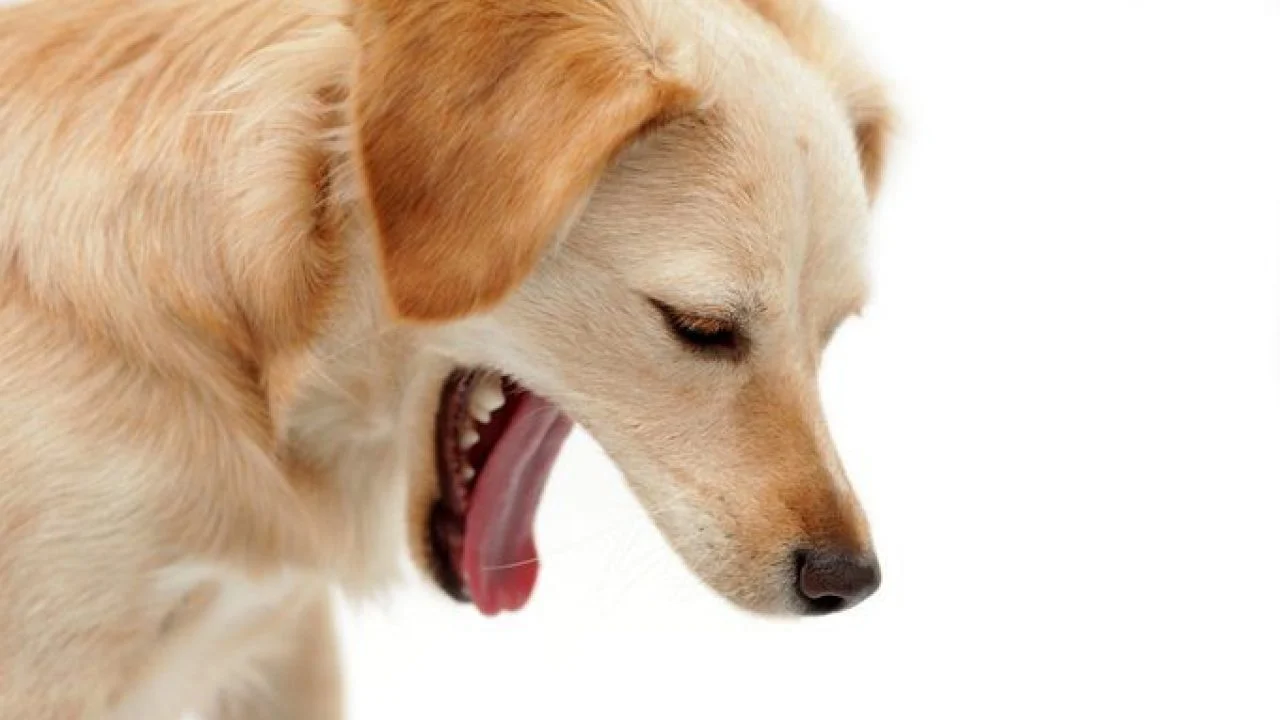No matter how small or serious the reason, vomiting in dogs is not normal.

Distinguish between vomiting and burping to determine the appropriate treatment
Dogs can also burp and push undigested food out without abdominal force or any sign of serious illness. When burping, the dog simply lifts the food up and relies on gravity to push the food down to the stomach. However, in case of urgent vomiting (acute vomiting), the dog may expel all the contents of the stomach due to abdominal muscle contraction. You may see your dog bend over to vomit and throw up an unpleasant odor.
Ợ is often a sign of esophageal disease or digestive problems in the early stages. For example, if you eat too much and too quickly, the food your dog burps out is often undigested and intact.
If you burp frequently, your dog may be suffering from a long-term illness, so put the dog food on a high chair and take your dog to the vet.
Consider the cause of vomiting
You should pay attention to your dog’s recent diet, behavior, emotions, and environmental conditions to determine the cause of vomiting. For example, you can recall your last walk to determine if your dog has eaten any rotten or spoiled food. Vomiting can be a common symptom of “guts,” in which dogs ingest spoiled and unhealthy things, forcing the dog’s body to get rid of it. However, vomiting in dogs can be caused by many other serious causes, such as:
- Gastrointestinal infections
- Intestinal parasites (helminths)
- Severe constipation
- Acute kidney failure
- Acute liver failure
- Colitis
- Parvo disease (gastroenteritis)
- Cholecystitis
- Pancreatitis
- Ingesting poison
- Thermal shock
- Uterine infection
- Drug reaction
- Cancer
Assess the frequency of vomiting
If the dog vomits only once, eats normally, and has normal bowel movements, then vomiting is simply an incident (not due to any other cause). If your dog vomits several times a day or lasts longer than a day, you should take your dog to the vet right away.
Dogs with persistent and repeated vomiting should have a thorough examination in the veterinary clinic. Your veterinarian can diagnose the disease with a variety of tests such as X-rays, blood analysis, stool tests, urinalysis, ultrasound, and/or radiography.
Check the vomit to determine the cause
You should look at the vomit to find out if there are wrappers, plastic bag samples, bone fragments (you should not give your dog real bones because this is also one of the causes of vomiting) inside or not.[ 19] If you see blood in the vomit, you should take your dog to the vet right away because the dog is at risk of rapid, severe blood loss and death.
If there are no foreign objects in the vomit, you can see the shape and characteristics of the vomit. Determine if vomit looks like undigested food or is liquid. You should keep a record of what you observe to notify your veterinarian when your dog continues to vomit. Your veterinarian can make a diagnosis if you provide pictures or a sample of the vomit.[20] Imaging can help your veterinarian quantify the vomit and find the right treatment.
Take care of your dog when vomiting
Avoid feeding your dog within 12 hours. Vomiting can irritate the lining of the stomach and make your dog vomit more if eaten soon after. The stomach needs time to rest, and this also helps you determine if the vomiting is caused by food. You should avoid feeding the dog, even if the dog seems extremely hungry. Fasting is also an opportunity for the dog to get rid of whatever is causing the vomiting.
Give the dog water to drink. Every 1 hour, give the dog 1 teaspoon of water/0.5 kg of weight once. You should continue to give your dog water in this way throughout the day and night until he can drink water as usual. Drinking too much water after vomiting can cause your dog to vomit again. On the other hand, dogs can become dehydrated if they do not drink water. You should take your dog to the vet if he can’t even drink this small amount of water.
After 12 hours, you can start feeding your dog 2-3 teaspoons of low-fat and easy-to-digest food. Lean meats like boneless chicken and hamburgers will provide your dog with the protein he needs. Meanwhile, boiled potatoes, low-fat cottage cheese and cooked rice can fully offset the amount of carbon hydrate required by the dog. You can mix 1 part lean meat with 5 parts carbon-hydrate. You should make sure to feed your dog well-cooked, fat-free, and spice-free food that’s easy to digest, instead of giving your dog regular food.
After the first day of giving your dog bland food, you can mix the bland food with some regular food for one meal. For example, start mixing 50/50 for one meal, then gradually increase to 3/4 regular food with 1/4 bland food. You can feed your dog normally after that if the dog is no longer vomiting. Always remember to follow your veterinarian’s advice and bring your dog in for a follow-up visit if necessary.